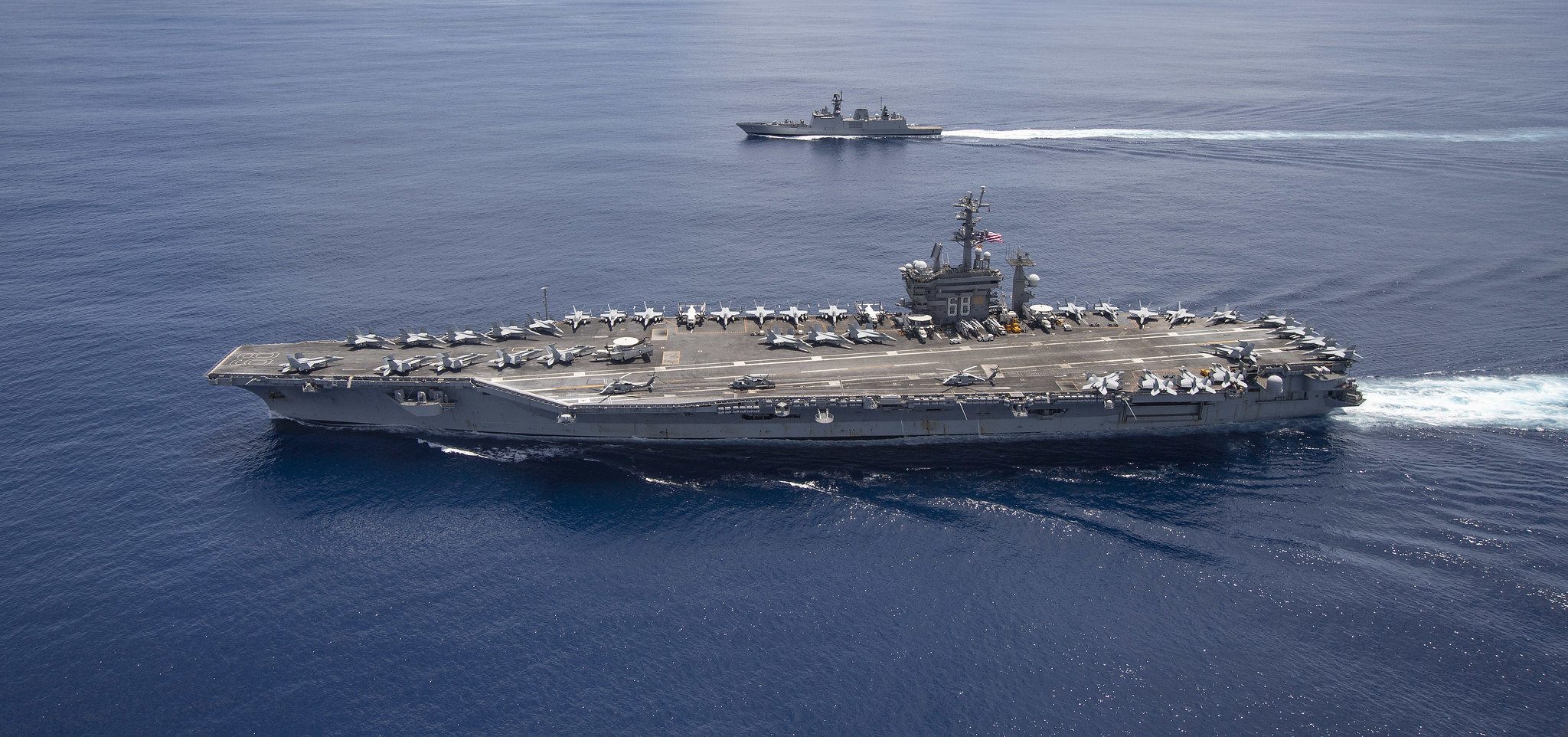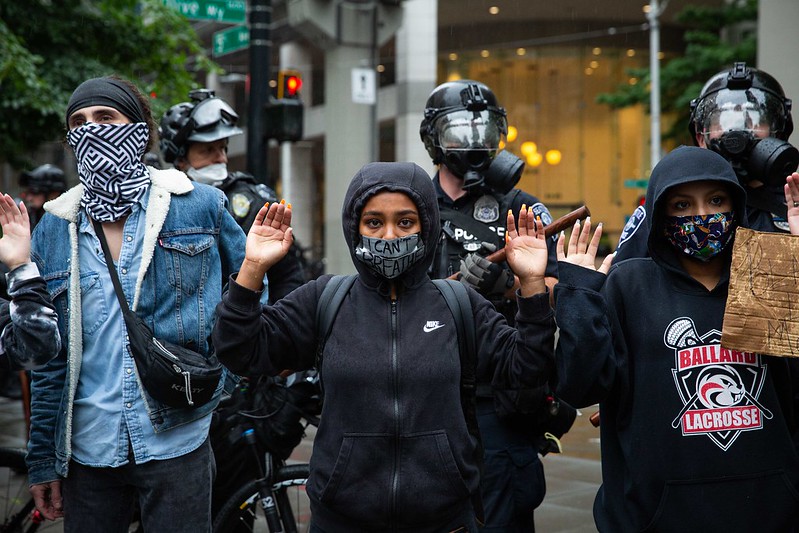The United States of America is the world’s sole military superpower. It is by far the world’s largest military spender and arms producer, and by some margin the largest arms exporter.
Externally, the US is engaged in multiple wars around the world, including in Afghanistan, Iraq, Somalia, and Yemen, and has ongoing tensions, some severe, with numerous countries. Internally, increasingly militarized police forces are responsible for hundreds of killings every year, disproportionately of black people, while Immigration and Customs Enforcement (ICE) and border control forces terrorize immigrant communities and are responsible for severe human rights abuses.
The UK is the US’s closest military ally, frequently participating in US-led wars. There is a substantial two-way arms trade between the two countries, and there is likewise a strong degree of integration between the two countries’ arms industries.
Militarized policing and border control
Protests in the US against racism and police violence have been met with further state violence. Following the murder of George Floyd in May 2020, President Trump threatened to deploy the army against protestors and seek “total domination”.
Police forces in the US, as in the UK and many other countries, disproportionately target people and communities of colour for surveillance, arrest, and violence. US police killed at least 1,099 people in 2019, according to Mapping Police Violence.
Many US police forces have increasingly acquired military equipment through programs supplying them with excess equipment from the armed forces. Such equipment includes armoured vehicles, aircraft, drones and helicopters, assault and sniper rifles, bayonets, grenade launchers, and body armour. Heavily armed police units have been used against protests by communities of colour, such as Black Lives Matter and Native Americans at Standing Rock protesting the Keystone-X oil pipeline through their lands.
Meanwhile, the paramilitary Immigrations and Customs Enforcement organization (ICE) terrorizes immigrant communities with its increasingly frequent raids. ICE, along with Customs and Border Patrol (CBP) maintains a network of detention centres for undocumented immigrants, many of which keep detainees, including children, in extreme and inhumane conditions. In some of the detention camps at the borders, this includes keeping detainees in cages, with inadequate food, water, sanitation, medical care, and even protection from the elements.



